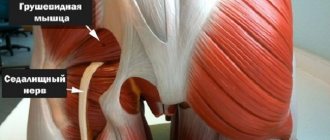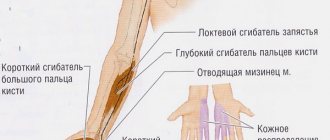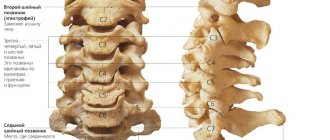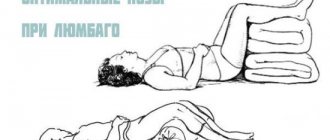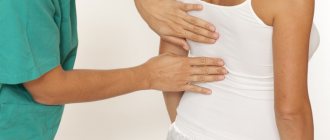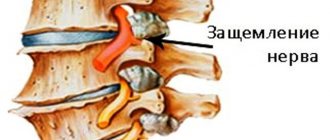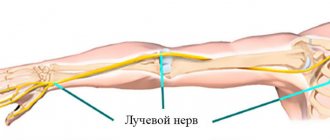What to do if the nerve under the shoulder blade is pinched?
When the nerve endings are compressed by a protrusion, adjacent vertebrae, hernia, or muscle tissue contracted by spasms, the nerve becomes pinched. Such a disease is characterized by significant pain, forcing the patient to take measures to eliminate it. After pain appears when a nerve is pinched under the scapula and in the back, you should immediately seek help from a medical facility to determine the cause of the disease and prescribe appropriate therapy.
Prevention
To avoid exacerbation of pain when pinched in the scapular region, it is recommended to use an orthopedic mattress while sleeping and wear warm clothes in winter (cold often causes relapse of neuralgia). Also, to prevent the disorder, it is better to avoid lifting heavy objects.
Patients with endocrine pathologies are prescribed to follow a diet, and those with osteochondrosis are prescribed to visit a doctor at certain intervals.
In addition, to prevent exacerbation of pain under the shoulder blade, it is recommended to regularly perform a complex of exercise therapy and attend massage sessions.
Causes of pathology
The main factor behind a pinched nerve in the back, under the right or left shoulder blade, is the appearance of osteochondrosis. People who suffer from this complex of disorders with minor loads on the articular cartilage experience nerve entrapment. In this case, elimination of the underlying ailment is required.
There are also other factors of such a disease process.
- Predisposition at the genetic level. Features of a person's structure can be inherited. If the father or mother suffered from a pinched nerve under the scapula on the left or right, then the child may also encounter the same problem.
- Pregnancy period. Excess body weight is added to this factor. Due to the load on the back being higher than permissible, a pinched nerve occurs. While carrying a child, the spine is more sensitive to weights, therefore, with any overload, the nerve is pinched, both along the entire length of the back and between the shoulder blades, on the left and right sides.
- Incorrect posture. You need to keep your back straight. When a person hunches over, there is a risk of nerve impingement.
- Painful growths on the vertebrae. They appear as a result of various ailments or as a result of trauma. The growths are often located in the area where the nerves pass and when a sudden movement is made, they are compressed.
- Sports activities. If the movements are performed incorrectly (sharp turn), the nerve endings may be compressed.
- Rheumatoid arthritis. The disease is characterized by inflammation of the joints. In the area where pathology appears, infringement often occurs.
When the nerve under the scapula is pinched due to a minor factor, it is possible to overcome severe pain and return to a normal lifestyle in a short time. If a nerve is pinched due to thinning intercostal discs due to osteochondrosis or the presence of an intervertebral hernia, then the treatment course should be complete, long-term and comprehensive.
Symptoms
Nerve fibers spread from the spine throughout the body, entering every muscle. Under the influence of various factors, these tissues are pinched under the scapula due to displacement of the vertebrae or the appearance of a tumor. At the site of pinching, signs of the disease appear intensely.
A pinched nerve under the left shoulder blade occurs frequently, and the pain is transferred to the arm. To determine an accurate diagnosis, you need to undergo examinations by a doctor. Similar symptoms can occur with cardiac pathologies.
Characteristic symptoms
The main sign of pinched spinal fiber is severe and burning pain, which sometimes becomes unbearable and can radiate to the leg. The limb loses its usual mobility, and shooting pain is felt when standing. With a hernia or prolapse, the pain is sharp and intense. The initial development of the inflammatory process indicates the development of radiculitis.
Pain and discomfort may be constant or intermittent. Also a symptom of pinched fibers in the back, near the shoulder blade, is numbness in the limbs.
In severe situations, the patient develops spinal cord compression. This results:
- to decreased sensitivity;
- changes in the motor process with arms and legs;
- paralysis
When the scapular nerve is pinched, the pain moves to the arm, reminiscent of a shooting sensation. It is important to seek help in time if such symptoms appear, since the signs of this disease are similar:
- with pain in the heart;
- symptoms of pneumonia;
- pleurisy;
- oncological diseases.
Signs of neuralgia are often present constantly, even during active movement and rest. Pain increases when trying to move the body or feel the space between the ribs.
If the cervical nerve is pinched, the patient may feel:
- weakness in the shoulders and neck;
- swelling and numbness will be felt in the tongue;
- pain on the left side of the chest, similar to angina pectoris;
- pain between the shoulder blades, in the collarbone, on the back of the head.
When pinched, the pain is felt very sharply:
A decrease in pain is observed during numbness of the limbs, and with severe hypothermia, severe pain may occur.
Possible consequences
The most common consequences of a pinched nerve in the back are complications in the form of intervertebral hernia, partial or complete impairment of motor function, and muscle spasms. The harmful effects of pinching also affect the immune system, reducing the protection of affected tissues from malignant tumors and viruses. In some cases, loss of strength and problems with interruptions in blood pressure cause disruptions in the functioning of internal organs.
Often, as a result of pinching, intervertebral hernia, spasms in muscle tissue, and problems with motor function occur. Immune system disorders may occur, and the protection of damaged cells from viruses and harmful tumors deteriorates. In some situations, circulatory disorders and weakness cause pathologies of internal organs.
Treatment options
What to do when a fiber is pinched in the area of the shoulder blades? The first thing to do is to unload your back and lie down on a hard, flat surface. Take painkillers and sedatives.
When a nerve is pinched, blood vessels may also be pinched. The victim finds it painful to breathe. You can improve your well-being by opening the window and unbuttoning your clothes. After the manipulations, you should call for medical help.
Pathology therapy takes place in 3 stages.
- Pain relief with oral medications or injections. The patient is prescribed bed rest and a special diet that does not allow the consumption of salty, spicy, or smoked foods.
- Remove inflammation with non-steroidal drugs that have an anti-inflammatory effect.
- Restorative functionality of a pinched nerve through massages, manual procedures, therapeutic exercises, the use of vitamins, acupuncture.
How long does pain in the back and under the shoulder blade last? This will depend on the characteristics of the body and the effectiveness of therapy. The first results can be seen after 2 weeks.
To speed up recovery, treatment with medications and traditional methods is combined.
For home treatment, it is convenient to use ointments. Only those ointments prescribed by a specialist are used, since there is a risk of developing allergies.
- Finalgon, Viprosal - warming ointments, eliminate pain, activate blood flow.
- Diclofenac, Betalgon, Flexen - relieve pain and reduce inflammation.
To ease your well-being and relieve inflammation when a nerve is pinched under the scapula, take painkillers at home.
Since tablets can lead to side effects, often when the subscapular nerve is pinched, specialists prescribe injectables.
If there are no complications, conservative methods effectively cope with the problem of pinching. Afterwards, you can begin treatment with traditional methods, which may include relaxing baths, taking medicinal infusions, and using ointments.
Other diseases – clinics in
Choose among the best clinics based on reviews and the best price and make an appointment
Family
Moscow, Orekhovy pr., 11, entrance from the yard (from the children's playground)
Shipilovskaya
7
- Consultation from 1850
- Reflexology from 2000
- Neurology from 500
Many problems can be avoided if you take your health seriously. Here are some tips to help you stay well:
- Walk more in the fresh air.
- Do exercises every morning. Or better yet, therapeutic exercises and swimming 3 times a week.
Swimming is the best sport for spinal health
- When working sedentarily, try to take breaks every 2 hours to relieve stress on the cervical and lumbar spine.
- Take a therapeutic massage course 2 times a year.
- Avoid hypothermia and drafts. Dress appropriately for the weather. A common cold can cause a pinched nerve.
- You need to eat right and not take medications that negatively affect the absorption of calcium.
- If osteochondrosis or another disease of the spine is diagnosed, then you need to see a doctor and undergo examination 2 times a year.
- Reduce your consumption of salty, fatty, spicy foods.
- Do not lift weights, especially abruptly or incorrectly. Distribute your weight on both hands.
- Sleep only on an orthopedic mattress and pillow (medium hardness).
- Endocrine disorders cannot be ignored.
- Get preventive examinations every year.
Optimism and good mood help a lot.
Treatment methods for back pain due to a pinched nerve depend on the cause of the symptoms. These may be pathologies of the spine or internal organs.
If a nerve is pinched under the shoulder blade, you need to see a doctor and get examined. Only then will effective therapy be prescribed, which can be carried out at home and in the clinic.
What to do if a nerve is pinched under the scapula
Often, after significant stress or hypothermia, a pinched nerve under the scapula can occur. In this case, the person begins to move with difficulty and experiences significant pain.
The causes of a pinched nerve in the scapula area can be very different, but one of them is considered a complication of osteochondrosis. In addition, factors such as:
- lifting significant weights;
- uncomfortable posture during sleep;
- incorrect posture;
- pregnancy;
- hypothermia;
- obesity;
- injuries.
If a nerve is pinched for a secondary reason, then you can cope with significant painful manifestations and return to normal habitual activities in the shortest possible time. If the problem arose due to thinning of the intervertebral discs due to osteochondrosis or intervertebral hernia, then the therapy must be complete, long-term and comprehensive.
Important! You cannot self-medicate and limit yourself only to ointments and medications, since you definitely need to see a doctor and undergo a full course of therapy.
From the spinal cord, nerve endings spread throughout the body, penetrating every muscle. In the event of provoking factors, the nerve under the scapula may be pinched by nearby vertebrae or a neoplasm in the spine.
In the area where the nerve is pinched, the symptoms of the disease appear most intensely. The main symptom of the disease is considered to be painful manifestations. Moreover, they can be stabbing, sharp or aching. Another fairly characteristic sign is considered to be limited mobility in the affected area, which is connected to pinched nerve endings.
A pinched nerve under the left shoulder blade occurs most often and is characterized by peculiar painful sensations that radiate to the arm. However, in order to make an absolutely accurate diagnosis, you need to consult a doctor, since exactly the same symptoms can occur with heart disease.
Back pain between the shoulder blades
If a patient has an attack of pain caused by a pinched nerve in the back, then he needs to provide first aid. To do this you need to do the following:
- Unload the back - lay the victim on a hard surface, for example, on a hard bed or floor, after laying a soft blanket over him. To relieve the load from the lower back, you need to place your legs at right angles to the torso (for example, if the patient is lying on the floor, then your legs can be placed on a chair);
- Give a pain reliever, for example, Ibuprofen or Analgin;
- To relieve spasms from muscle tissue, give the patient an antispasmodic drug, for example, No-Shpa. This will not only relax the muscles, but also relieve pain, and also activate blood circulation in the area where the pain is located;
- Call an ambulance.
If a nerve is pinched in the back, it is necessary to avoid physical activity and drafts, and also maintain bed rest.
You can understand what to do if you have a back problem by following these tips:
- Remove stress from the spine. To do this, you need to lie down on the bed, but if the pain is acute enough, you can use the floor together. If the problem concerns the lumbar region, then eliminating the pain is extremely problematic. To do this, it is recommended to form a right angle between your legs and torso, that is, while lying on the bed, throw your lower limbs over the wall;
- If you do everything correctly, the pain will go away over time, but a new task will appear and it is to rise from this position. This is not difficult to do, but most often the pain attack returns. In order to rise correctly, you need to roll over to your side and stretch your arms towards an object that you can lean on, thereby reducing the load on your back. If there is nothing at hand, then you need to get on all fours and in this position move to the nearest support point. The main rule in such a situation is to try not to move your back, but to lift yourself carefully, without straining your spine. Having risen to your feet, you need to find something to support your back. The ideal option is a special belt, but if it is not available, then a long towel or a blanket wrapped in several layers will come in handy. Not only the area with the pinched nerve should be fixed, but also the area next to it;
- If the pain attack is quite persistent and severe, then you should take painkillers. Among them, it is advisable to select medications with anti-inflammatory properties like Diclofenac. After fixing your back and taking the pills, you must remain in bed for several days. At this time, you need to completely relax your spine and try to avoid even the slightest drafts.
We invite you to familiarize yourself with Massage for thrombophlebitis of the lower extremities
It is important to correctly lift the patient from a lying position, because any incorrect movement can cause a new pain attack. The patient should get on all fours, lean on a stable object and stand up, while the back remains in the same position
Having risen to your feet, you need to secure your back with a special belt; if one is not available, then use a towel or a warm scarf instead.
If your lower back is affected, only a doctor will tell you what to do correctly, after an examination and identification of the causes.
First, stop all movements. If the cause of pain is a pinched nerve root, then movement will aggravate the process of inflammation. If the sensations are strong and occur suddenly, then you should visit a doctor and identify the cause.
Since pain in the spine between the shoulder blades can occur during sedentary work and be a chronic, sluggish phenomenon, you need to do a warm-up. Move your shoulders: back and forth, circular movements, pull one shoulder up, the other down, then vice versa.
The main thing to do for back pain is to reduce the load on the spine. The main cause of all troubles is the static position of the body, so change positions more often, move, and do not allow the spine to stagnate. This will prevent aging of the vertebral structures.
Treatment options depend on the cause of the pain between the shoulder blades. Anti-inflammatory drugs, physiotherapy, gymnastics and massage are used. In general, treatment of pain in the spine comes down to eliminating its causes and is similar to how to treat osteochondrosis, since the same methods are used.
At home, pain can be relieved by massaging the painful area. A hand-held roller massager or the help of a loved one is suitable for this. The main direction of your efforts is to relieve muscle spasm; the task is to relax them, which will relieve pain.
Painful sensations in any part of the body are not normal. You should not delay a visit to a specialist if they are long-term and long-lasting. The diagnosis is largely determined by the source of pain.
If the pain occurs between the shoulder blades, establishing the exact cause becomes quite problematic. It may take quite a long time for the doctor to determine the cause of the illness. Pain is not always a consequence of problems with the spine. It can be provoked by various pathologies with tendons, ligaments, and muscles in the interscapular area.
Often the pain between the shoulder blades in the back is associated with a rather unpleasant feeling of heaviness, as well as a burning sensation. In most cases, it completely recedes or becomes dull when a person changes body position. If pain does not go away after changing posture, it is often caused by heart disease, spinal problems and other ailments. There are quite a few reasons.
Diagnostics
Since pain between the shoulder blades can indicate the course of a variety of diseases and pathologies, subsequent examination is carried out only on the basis of the diagnosis. If you suspect the presence of cardiovascular diseases, you need to do an ultrasound examination of the heart and an electrocardiogram.
To exclude diseases of the gastrointestinal tract, it is necessary to conduct an ultrasound examination of these organs. If musculoskeletal disorders occur, an x-ray and, if necessary, a tomography should be performed. All these examination methods must be performed first in order to exclude the occurrence of more serious problems and disorders in the body.
To determine what exactly could have pinched the nerve endings and for what reasons this happened, you need to perform a CT or MRI. This will allow you to assess the condition of the spine and identify damage or curvature of the intervertebral discs. Electromyography helps determine the presence of damage to the nerve endings responsible for the motor activity of certain muscle groups.
A nerve conduction study is also carried out, which can reveal damaged nerves. It is advisable to perform a manual examination and blood test.
Diagnostic methods
Since scapular neuralgia develops under the influence of numerous factors, the symptoms are similar to the manifestations of other diseases, so pain in this area will require a comprehensive examination of the patient. In order to establish the causes of discomfort under the shoulder blades, the following are prescribed:
- MRI and CT scans, which help detect the presence of tumors, spinal deformities or bone spurs;
- electromyography, which allows you to assess the condition of nerve fibers;
- external examination of the body;
- a general blood test to identify the inflammatory process in the body.
If there is a suspicion of a pinched nerve in the scapula, an additional test is used.
During this diagnostic procedure, electrodes are connected to the skin, through which a low-intensity current is applied. In some cases, additional research will be required to help identify the causes of neuralgia.
First aid
If a person has a pinched nerve, the patient feels very severe pain, which is why it is important to know how to provide first aid in order to improve well-being. If there is significant pain, the patient should be placed on a hard, flat surface and, if possible, reassured. It is imperative to take an anesthetic and a sedative, as the patient experiences stress and severe pain.
If nerves are pinched, blood vessels may also be pinched. In this case, the respiratory system may be impaired. To improve your well-being, you need to free your chest from clothing and open the window, as it is important to provide access to fresh air. Since the therapy must be carried out by a doctor, you need to call an ambulance.
Standard treatment for pinched nerve endings in the area of the shoulder blades is carried out according to the standard scheme. It is imperative to eliminate painful manifestations. For this purpose, injectable and oral medications are used. Therapy is carried out under strict bed rest. In addition, you need to follow a certain diet and avoid eating spicy, salty and smoked foods.
Elimination of the inflammatory process is carried out by taking non-steroidal anti-inflammatory drugs, used in the form of tablets, gels, and injections. Therapy is often carried out through the use of drugs from several groups.
Certain measures are required to restore damaged nerve endings. Such activities involve sessions of physiotherapy, manual therapy, acupuncture and the use of many other techniques.
Other diseases – clinics in
The inflammatory process associated with internal diseases can cause compression of the interscapular nerve. Let's consider all the main diseases that cause pain under the shoulder blade.
Gastrointestinal pathologies
Stomach diseases - gastritis, reflux esophagitis and ulcers, are manifested by pain radiating to the shoulder blades. This is accompanied by nausea and vomiting, heartburn and aching pain in the upper abdomen. Pathologies are detected by blood, urine and feces tests, and by FGS results. The treatment is carried out by a gastroenterologist.
Even with gastritis, pain can radiate under the shoulder blades, causing pinching
Appointed:
- Antibiotics – Amoxicillin.
- Antispasmodics – Niaspam, No-Shpa.
- Choleretic - Ursosan, Hofitol.
- Proton pump inhibitors - Omez, Nolpaza.
- Infusions of chamomile, St. John's wort, and yarrow herbs.
https://www.youtube.com/watch?v=https:NUy2VEj4ixs
In severe cases, surgery is prescribed.
Diabetes mellitus, pathologies of the thyroid gland, adrenal glands and hypothalamus cause metabolic disorders. This affects the structure of the bone tissue, which causes pinched nerves and frequent attacks of acute back pain.
An endocrinologist makes a diagnosis based on blood, urine, and hormone tests. An ultrasound of the thyroid gland, adrenal glands, and an MRI of the brain are performed.
Endocrine diseases (for example, diabetes) provoke the development of acute pain
Therapy is prescribed depending on the type of pathology:
- Hormone replacement therapy – Eutirox, L-Thyroxine.
- Antihyperglycemic agents – Diabeton, Metformin.
- Metabolism stimulants – Riboxin, Levocarnitine, Lecithin.
In some cases, hormones are taken for life. Neglected diseases lead to malfunction of the entire body. Diabetes and hypothyroidism are complicated by cardiovascular diseases and other disorders.
Tumors and metastases
New growths in nearby tissues and organs put pressure on the spinal column. Metastases in the spine compress the nerve roots, causing constant pain in this place.
Pathology is detected by X-ray images, MRI and CT findings. The oncologist provides treatment, which includes:
- radiotherapy;
- radiation therapy;
- hormone therapy;
- chemotherapy.
The tumor is removed surgically. Advanced cancerous tumors lead to the death of the patient.
Lung diseases
Pneumonia and pleurisy are manifested by unilateral pain in the chest and scapula. In this case, muscle tension and sensitivity in the affected area may be observed. The disease is accompanied by high body temperature, cough and shortness of breath.
Pneumonia causes tension in the back muscles
https://www.youtube.com/watch?v=https:PTXVi3LJzr8
Pathology can be detected by X-rays, listening to the lungs and blood tests. The pulmonologist prescribes treatment:
- Antibiotics – Flemoxin, Oxacillin.
- Bronchodilators - Salbutamol, Ephedrine.
- Mucolytics – Ambroxol, ACC.
- Antipyretics – paracetamol, nurofen.
- Antihistamines – Claritin, Cetrin.
- Immunomodulators – Immunal, Arbidol.
- Multivitamins – Complivit, Vitrum.
Inhalations and physiotherapy are prescribed. Untreated pathologies leave a chronic lesion in the lungs.
Causes
Many people experience discomfort in the back and shoulder blade. There are several reasons that can cause these unpleasant sensations. But usually the pain is caused by excessive strain on the muscles, an uncomfortable sleeping position, chronic diseases of bone and joint tissue, and herpes zoster.
This problem often occurs in people who are forced to constantly perform the same action. Since in this case, predominantly one hand works (for tennis players, golfers, assembly line workers), the lesion is noted on the side of the working limb, that is, only on the left or right.
Many people have woken up at least once with pain in the shoulder blade area. The reason for this is incorrect posture or head rotation. Pain occurs due to pinched roots after a night's rest, exacerbation of osteochondrosis, or a hernia of the cervical or thoracic spine.
Scapula fracture
A fracture of the scapula causes very severe pain. Increased discomfort is observed from moving the hands. At the same time, upon examination, swelling and blanching of the damaged scapula are noted.
Shingles
Pain is also characteristic of herpes zoster. This disease is caused by the herpes virus type 3, which is also the cause of chickenpox. The infection affects the nerve endings, and the disease is accompanied by severe pain. It can cause an attack of neuralgia or simulate nerve pinching between the shoulder blades.
Osteoarthritis
Severe disorders of bone and cartilage tissue in the area of the shoulder blades do not develop immediately. But at the stage of delamination and atrophy, characteristic chronic pain begins. The cause of the disease is trauma, age-related changes, autoimmune processes, and metabolic disorders.
Rotator cuff tears are the most common injury in athletes. Damage to one or more muscle fibers is accompanied by pain in the area of the scapula.
Myofascial pain occurs as a result of the formation of lumps (trigger points). They are characterized by pain on palpation, during movement of the limb. Because of this, the activity of the diseased limb is sharply limited, and the affected muscle pinches the nerve as a result of spasm.
During pregnancy, many diseases can worsen. With osteochondrosis, the load on the spine increases, hormonal levels and metabolic processes change.
All this can provoke a pinched nerve under the right shoulder blade or under the left.
The growing uterus causes disc displacement and lower back pain, the general architecture of the spinal column is disrupted, and pain is noted in other parts.
The main symptom of a pinched nerve in the upper back is severe pain, it occurs sharply, has a stabbing or cutting character. Sometimes the sensation resembles a lumbago, and in some cases the patient experiences a burning sensation. Irradiation is usually observed under the scapula, shoulder or upper limb.
At the same time, motor function is impaired.
Any change in body position causes deterioration. It becomes difficult to make turns, bend the body, and raise the arm above the horizon.
Muscle tension is determined by palpation. The person has difficulty finding a comfortable position; the intensity of the pain does not decrease even in a lying position. Sometimes there is a headache, a feeling of “crawling” and numbness in the hands.
Sometimes a pinched nerve under the left shoulder blade feels like a heart attack. It also develops pain radiating posteriorly. But means to improve blood circulation in the heart muscle (Corvalol, Validol or Nitroglycerin) do not bring relief. Taking a coronary dilator drug during an attack of angina relieves it in 3-5 minutes.
In an acute heart attack, pain manifests itself in the same way and the effectiveness of medications is lacking.
If the symptom of pain in the back or between the shoulder blades intensifies when inhaling, when turning the torso or bending over, it should be assumed that this is a sign of nerve damage.
Some relief comes from a pressure bandage, as it limits the excursion of the chest during breathing. The pain disappears completely within a few minutes after administration of the analgesic.
Diagnostics
For differential diagnosis, an electrocardiogram is performed, which, if pinched, will not reveal changes. If there are doubts, the most accurate information can be obtained from an ultrasound of the heart. Ultrasound examination will also help to rule out stomach problems.
X-ray, CT or MRI will help determine the pathology of the musculoskeletal system due to a pinched nerve. Disturbances in the conduction of nerve impulses are determined using electromyography. At the same time, the specialist evaluates the results of a general blood test and manual examination.
Treatment
Acute pain between the shoulder blades, which occurs as a result of compression of nerve fibers, requires immediate help. An acute condition can be alleviated independently before the arrival of medical workers.
First aid
First aid includes:
- placing the patient on a flat and hard surface;
- taking an analgesic or NSAID (it is best to use Ibuprofen or Indomethacin);
- in case of nervous excitement, it is recommended to use a sedative (tincture of valerian root or motherwort);
- If there is simultaneous compression of the blood vessels, the chest should be freed from clothing and the window should be opened.
Treatment for a pinched nerve under the scapula is carried out conservatively, using local remedies, tablets or injections.
For local use, ointments with a warming and distracting effect are used. Finalgon, Capsicam, Viprosal have these properties.
Use drugs with anti-inflammatory properties (gels, creams and ointments with indomethacin or voltaren).
There are products that simultaneously contain two or three active substances - they help relieve inflammation, relieve pain, and improve metabolic processes at the local level.
Pills
Treatment with tablets is symptomatic. They help relieve inflammation, swelling, and discomfort. Typically, your doctor recommends using:
- anti-inflammatory drugs (Ibuprofen, Movalis, Aspirin);
- painkillers (Analgin);
- glucocorticoids (Prednisolone).
All products have side effects and are recommended for use only after examination and on the recommendation of a specialist.
When tablets do not help and the pain persists, injectable forms of medications are used (Diclofenac, Movalis). Novocaine blockade helps treat pinching in the spine, which will quickly eliminate even the most severe pain. After relief of the main symptom, the patient switches to tablets.
Traditional methods
Drug treatment
When treating pinched nerve endings in the area of the shoulder blades, various groups of medications are used, in particular:
- painkillers and anti-inflammatory drugs;
- ointments;
- injections.
Painkillers and anti-inflammatory drugs help eliminate pain and reduce inflammation. For therapy, drugs such as Diclofenac, Movalis, Ketonal, Ibuprofen are used.
Also, in case of pinched and inflamed nerve endings, pain-relieving ointments and gels are used, which must be prescribed by a doctor, as they can provoke allergies. To eliminate painful manifestations, ointments such as Finalgon, Betalgon, Viprosal, Carmolis are used.
Traditional methods
In the absence of complications, conservative methods successfully cope with pinched nerve endings, and painful manifestations completely go away, after which you can begin therapy with traditional methods. For this, tools such as:
- treatment with ointments;
- taking a bath;
- use of infusions.
To treat pinched nerve endings, ointments prepared from natural ingredients are widely used. To prepare the ointment, you need to grind the bay leaf and juniper needles until smooth. Add a little melted butter to the mixture. The resulting product is applied to the damaged area. The ointment helps relieve pain and helps relax muscles.
Relaxing baths also help cope with inflammation very well. To carry them out, you need to add decoctions and infusions of medicinal herbs to the water. The duration of the procedure is 20-30 minutes. You can purchase special herbal infusions that have an anti-inflammatory and analgesic effect.
Special medicinal infusions are also widely used for therapy. Such products are used for internal and external use. Wormwood infusion is used as a pain reliever. To do this, you need to infuse wormwood inflorescences and rub them into the damaged area. For internal use, yarrow herb is suitable, which needs to be brewed and taken 1 tbsp. l. 4 times a day.

